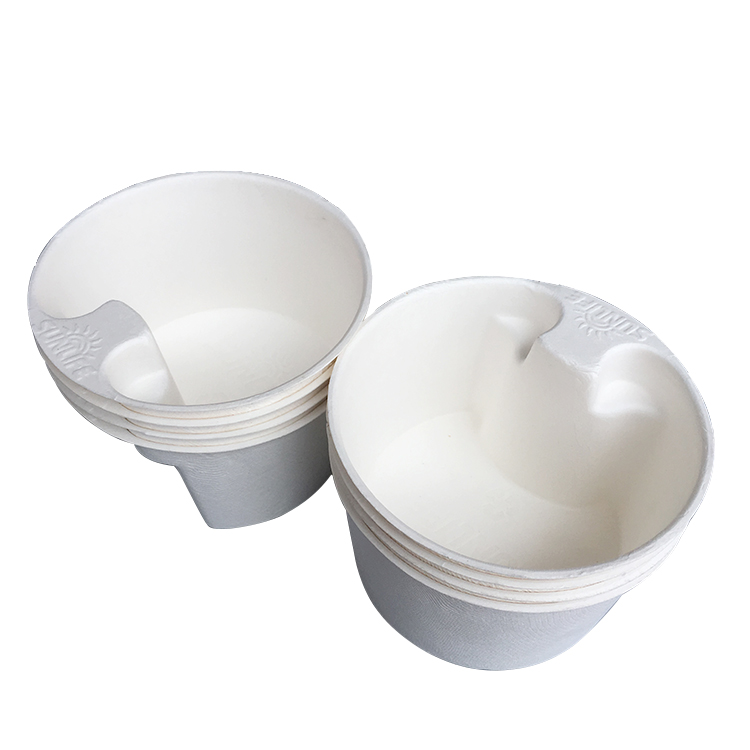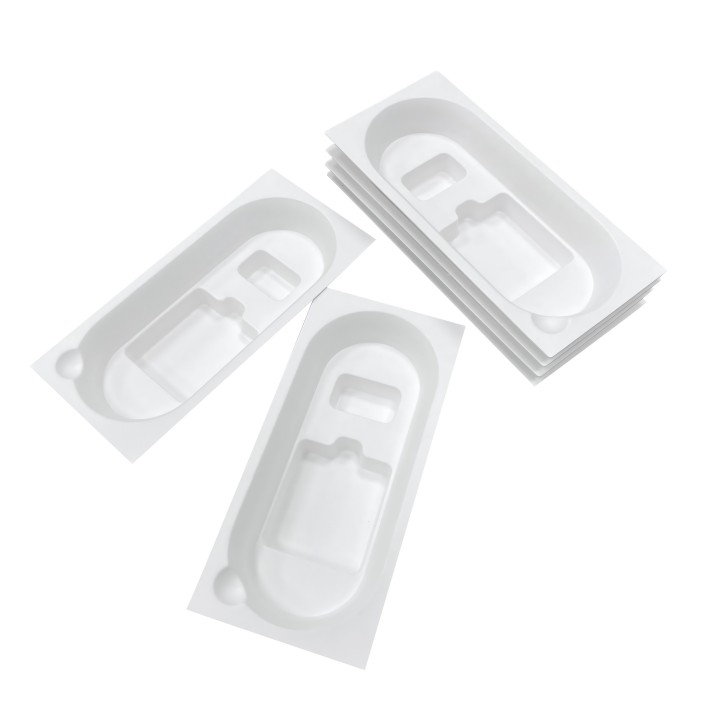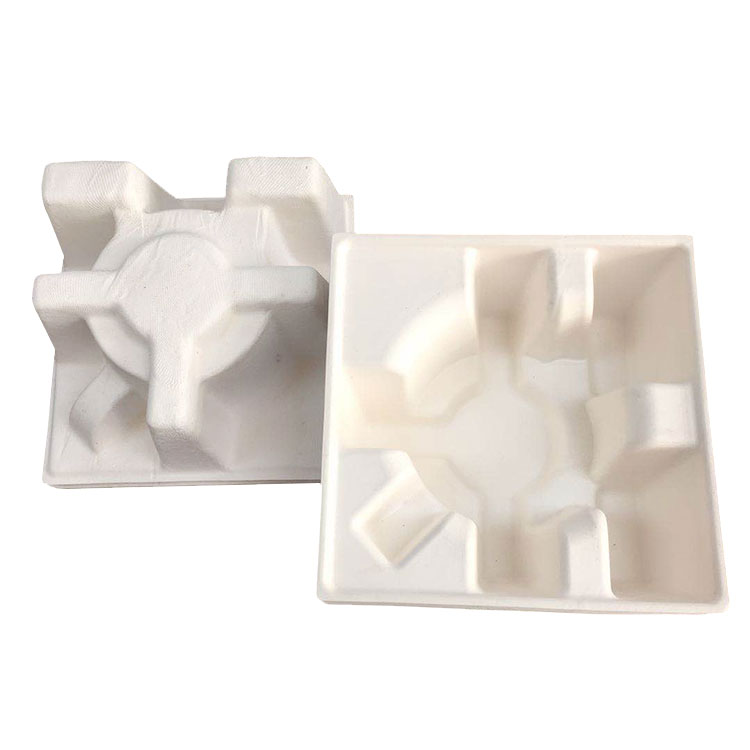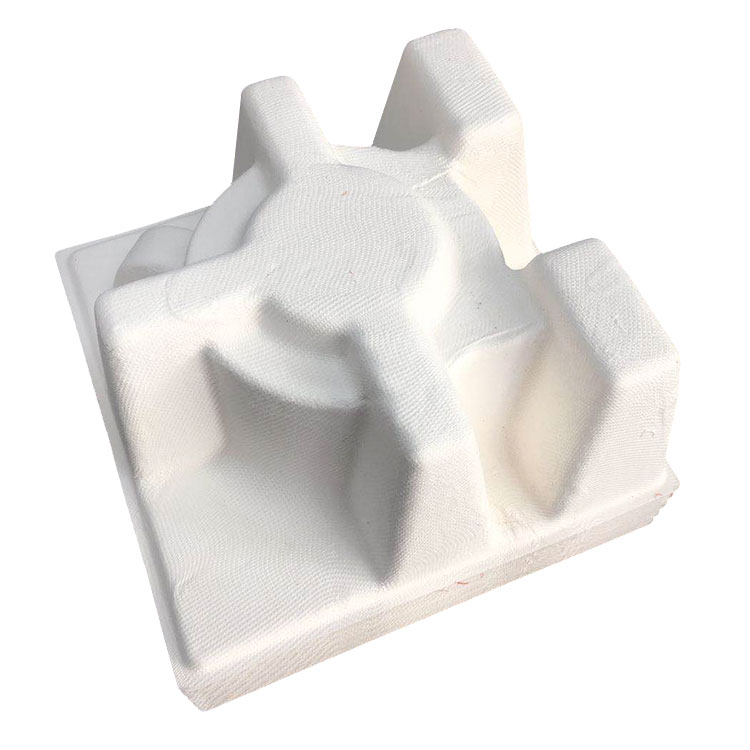In view of the current status of pulp molded industrial packaging product design, this paper preliminarily proposes a design specification based on the unit structure of pulp molded products. This design specification helps to normalize and standardize the design of molded pulp products and improve the efficiency of pulp molded product design.The design of pulp molded lining is similar to the design of blister packaging, which effectively combines curved surfaces, chambers, reinforcement ribs and other structures to form a product. Unlike blister products, pulp is a semi-flexible material after molding, and the material strength is far less than that of plastic. Stress concentration should be avoided during design, which will improve the structural strength of the product throughout the entire life cycle.
1. Clarify the properties of the packaged product
The packaged product is the research object of pulp molded product design. Before the structural design is carried out, its main properties related to the design must be clarified, mainly including the shape, quality, size, fragility, vulnerable parts, accessories and their size of the packaged product. In addition, it is necessary to understand the customer's design requirements and product positioning, and select pulp and process within a reasonable cost range. For example, some high-end cosmetic pulp molded packaging requires a simple and delicate wet-pressed pulp tray, while the relatively rough dry-pressed pulp tray does not meet the tonality positioning of the packaged product.

2. Clarify the circulation environment of the package
From the time the package is packaged on the production line, it enters the logistics and transportation environment, and all external factors encountered during the circulation process are circulation environment factors. Circulation environment factors are the main external factors that cause damage to the package. There are three main types of environmental factors that affect the design of pulp molded cushion pads:
(1) Physical and mechanical factors, mainly referring to external factors such as impact and vibration in the transportation process, and stacking in the warehousing process. Before designing pulp molded cushion pads, it is advisable to fully understand the loading and unloading equipment, loading and unloading height, transportation methods and means in the transportation process, as well as the number of stacking layers in the warehousing process. Vibration can cause the fibers on the surface of the pulp molded cushion pad to fall off and scratch the surface of the packaged product, so make relative adjustments according to different product characteristics.
(2) Biochemical factors, mainly including the influence of natural conditions such as temperature, humidity, rain, salt spray, radiation, harmful gases, and microorganisms. Among them, the humidity in the transportation and storage process has the greatest impact on the pulp molded cushion pad, which can lead to the risk of the cushion pad failing due to moisture.
(3) Human factors, mainly refers to rough loading and unloading, violent transportation, etc. The falling impact caused by the loading and unloading process is the most serious damage to the package and is the main consideration.

3 Design principles of pulp molding cushioning pads
(1) It has good impact energy and vibration energy absorption, reduces the impact and vibration transmitted to the product, and avoids product damage caused by impact and vibration in logistics environments such as transportation. In particular, harsh logistics environments should be considered, such as harsh road conditions and violent loading and unloading. For example, pulp molding with thicker walls has relatively good impact and vibration resistance. Within the cost range, try to use pulp molding with thicker walls to improve the packaging protection effect.
(2) Disperse the stress acting on the product, avoid stress concentration, and protect the surface and raised parts of the product. By arranging the mold cavity and the position of the reinforcing ribs of the molded product, effectively avoid the raised parts of the product, fill the recessed parts of the product, and provide close protection for the product, which is also a problem that the design end needs to pay attention to.
(3) Prevent the product from moving in the packaging container, fix the product, prevent mutual contact between products, and avoid scratches. The angle between the side wall of the structural unit of the pulp molded product and its demolding direction is called the draft angle. Theoretically, the smaller the draft angle, the closer the pulp molding can be to the product to avoid product displacement. Due to process limitations, wet-pressed pulp molding can currently achieve 0.5°, and it is still difficult to achieve 0° draft.
(4) Good damage resistance, environmental stability (temperature and humidity stability) and physical compatibility (anti-static, etc.). For products shipped overseas, they will experience harsh environments such as high temperature, high humidity and salt spray, requiring pulp molding products to have a certain stability.

4 Pulp molding slurry selection
Depending on the production raw materials and their ratios, dry-pressed pulp molding materials mainly include papermaking pulp, waste corrugated cardboard, waste newspapers, paper scraps, and mixed materials of corrugated paper and newspapers. Wet-pressed pulp molding materials mainly include plant fiber pulps such as wood pulp, bamboo pulp, sugarcane pulp, straw pulp, and reed pulp. Of course, various pulps need to be mixed and used in proportion.
The performance of pulp molding materials depends on factors such as raw material ratio, production process, and production equipment. According to the specific design requirements such as the nature and cost of the packaged products, select the appropriate pulp molding materials.
(1 ) Small and lightweight electronic products have low requirements for cushioning performance and high requirements for appearance. Waste newspapers and raw pulp with soft material properties can be selected.
(2) Medium, heavy or precious electronic products have high requirements for strength and cushioning performance. According to the nature of the specific products, select corrugated paper and newspaper mixed materials with different ratios.

Pulp molding packaging design is a dynamic field that balances sustainability, functionality, cost-effectiveness, aesthetics, customization, and innovation. By focusing on these key areas, designers can create packaging solutions that not only protect and promote products but also resonate with modern consumers’ environmental values. This holistic approach ensures that pulp molded packaging remains a competitive and desirable option in the marketplace.

